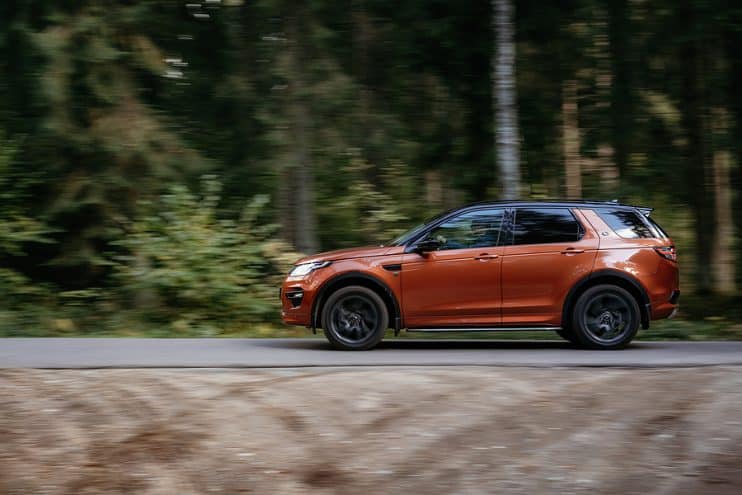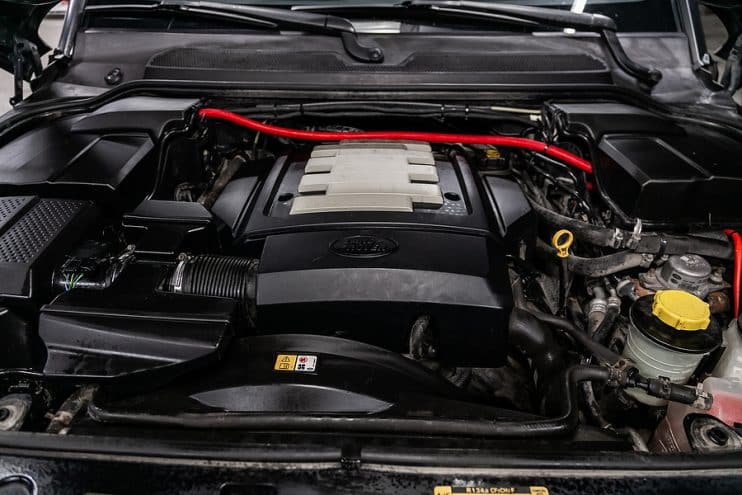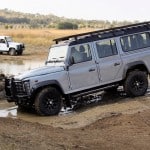
Thinking about buying a used Land Rover Discovery Sport? This stylish SUV blends off-road pedigree with family-friendly practicality – but not without its share of headaches. Like many premium 4x4s, the Discovery Sport can be prone to reliability issues, especially on early models.
This guide breaks down buyers’ most common problems, from timing chains to turbochargers. Whether browsing for new or used Land Rover Discovery parts or just researching before committing to buying, here’s what you need to know.
Table of contents:
- Common problems with the Land Rover Discovery Sport
- Is the Land Rover Discovery Sport reliable?
- Is the Discovery Sport expensive to maintain?
- What’s the best year to buy?
Common problems with the Land Rover Discovery Sport
Before you buy, it’s a good idea to know what can go wrong. While newer models are better built, older Discovery Sports – especially those made between 2015 and 2018 – tend to suffer from several recurring faults.
Let’s take a closer look.
Timing chain wear
The timing chain is a weak spot on early Ingenium diesel engines (especially 2015–2017). Over time, the chain can stretch or the tensioner can fail, leading to rattling noises on startup. In worst cases, this can result in catastrophic engine damage.
Watch for:
- Rattling or metallic noises from the engine, especially when cold
- Warning lights or poor running
A stretched chain is a big job, often requiring a replacement engine if it snaps.
Turbocharger failure
The turbo on some diesel Discovery Sports can fail prematurely, usually due to oil starvation or carbon buildup. You might notice a loss of power or a high-pitched whining noise as the turbo begins to give out.
Watch for:
- Sluggish acceleration
- Excess smoke or noise under load
- Turbo whistle or screech
A failed turbo isn’t cheap to replace, so get it checked early.

Seatbelt issues and safety recalls
Multiple recalls have affected the seatbelt pretensioners and second-row seat mechanisms on Discovery Sports so it’s worth checking everything works as it should. Problematic seatbelts won’t offer adequate protection in a crash if they haven’t been fixed.
Watch for:
- Recalls on 2015–2018 models
- Rear seat folding mechanisms not latching securely
Check the vehicle’s vehicle identification number (VIN) on the DVSA website to confirm all recalls have been addressed.
DPF and AdBlue issues
Diesel particulate filters (DPFs) can become clogged if you mainly use your Land Rover for short trips. On post-2016 diesels, the AdBlue system, which helps reduce emissions, can also cause problems.
Watch for:
- Dashboard warnings for DPF or AdBlue system
- Poor fuel economy or limp mode
- Expensive repairs if the tank or injector fails
A faulty DPF or AdBlue system can lead to reduced engine performance and high repair bills.
Oil and coolant leaks
Engine oil leaks are frequently reported on early Discovery Sports, particularly from the oil sump, cooler, or timing chain cover. Ingenium engines are also prone to coolant leaks, often at the water pump or thermostat housing.
Watch for:
- Oil spots under the car
- Low coolant warning lights
- Overheating or white smoke from the exhaust
Both issues can escalate quickly – and in some cases lead to head gasket failure or a full replacement engine.
Crankshaft pulley failure
Another common issue is the failure of the crankshaft pulley. The rubber damper can deteriorate over time, causing excessive vibration and even leading to timing belt misalignment.
Watch for:
- Whirring noises from the engine
- Visible wobble on the pulley
- Engine vibration
Replacement is relatively affordable if caught early, but left unchecked, it can cause further engine damage.

Electrical problems
Owners often report electrical gremlins, especially on earlier Discovery Sports. These can include infotainment glitches, warning light errors, and problems with the power tailgate or keyless entry doors.
Watch for:
- Freezing infotainment screen
- Sensors behaving erratically
- The tailgate not opening or closing smoothly
A complete electrical diagnostic is worth getting before you buy.
Wheel bearing and brake wear
Wheel bearings can wear out prematurely, leading to a humming noise from the wheels when you’re driving at high speeds. Brake components, such as pads, discs and calipers, may also tend to wear quickly, especially on heavier diesel models.
Watch for:
- Rumbling or grinding noises
- Pulsation or judder under braking
- Uneven tyre wear
If the wheel bearing fails, it can cause steering issues or worse.
Bushes and suspension wear
Suspension bushes, antiroll bar links, and control arms can all wear out, especially if the car has been used off-road or over rough roads. Premature wear can start to happen at around 40,000 to 60,000 miles.
Watch for:
- Clunks or creaks over bumps
- Uneven ride height
- Excess tyre wear
Check under the car for signs of cracked bushes or corrosion around the subframes and suspension arms.
Gearbox problems
The ZF 9-speed automatic gearbox can sometimes feel hesitant or jerky. This is sometimes due to outdated software, but it may also be a deeper issue with the mechatronic control unit.
Watch for:
- Lurching between gears
- Delay when pulling away
- Slipping or warning lights
If it can’t be fixed with a software update, you could be looking at a replacement gearbox.

Is the Land Rover Discovery Sport reliable?
Reliability can be a weak point for Land Rover parts, and the Discovery Sport is no exception. According to What Car?’s reliability data, it consistently scores below average compared to rivals. The most common issues affect the engine, electrics, suspension, and emissions systems.
However, newer models – especially post-2019 – show big improvements, with upgraded engines, improved electronics, and a better build quality.
Is the Discovery Sport expensive to maintain?
It can be. Servicing costs are higher than mainstream rivals. Parts can be pricey, and some repairs (like timing chains or DPFs) are labour-intensive so can cost a lot more than you expect. It’s not unusual for Land Rover faults to need specialist help or genuine new or used Land Rover Discovery parts to put right.
You’ll also pay more for regular servicing at Land Rover main dealers, though independent specialists can bring the price down.
What’s the best year to buy?
If you’re buying used, avoid early models from 2015–2017 unless they have a full service history and proof of major repairs (especially engine-related). These tend to be the least reliable and most expensive to maintain. If you can afford it, you’re best sticking to post-2019 models. Although you’ll pay a premium for these, think of it as saving money on expensive repairs in the long run.
Just make sure you go in with your eyes open – test every function, inspect underneath for rust or leaks, and budget for possible repairs like a gearbox or AdBlue system fault. With the right model and a solid history, it can still be a brilliant SUV with bags of character.






.png)